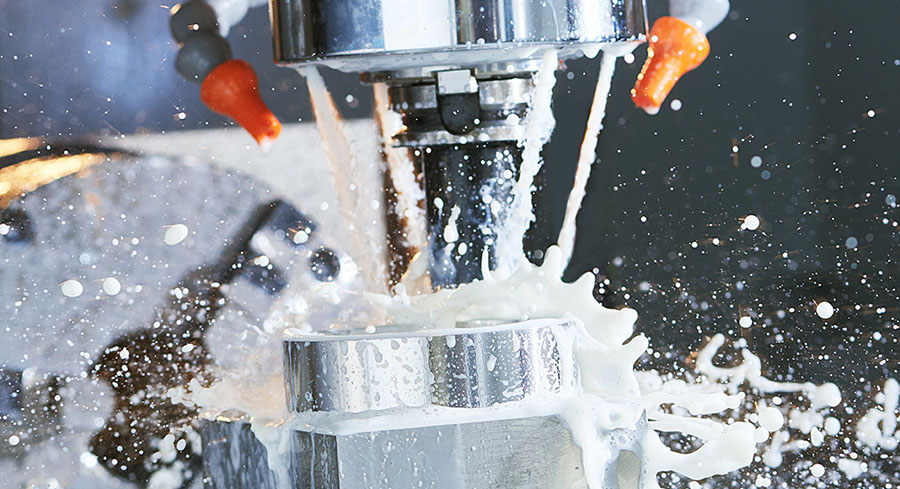The purest chemical element, aluminum, is soft, malleable, non-magnetic and silver-white. However, this element is not only used in pure form. Aluminum is usually alloyed with various elements (such as manganese, copper, and magnesium) to form hundreds of aluminum alloys with various significantly improved properties.
Aluminum alloy parts have high strength, good plasticity, excellent electrical conductivity, thermal conductivity and corrosion resistance, and can be heat treated to obtain good mechanical properties, physical properties and corrosion resistance. The machining of aluminum alloy parts is the processing of aluminum through lathes and CNC computer, and subsequent machining such as sandblasting, polishing, wire drawing, electroplating, spraying, anodizing, laser carving, etc. according to needs. The appearance of aluminum alloy parts is full of unique metal texture, light weight, strong heat dissipation, and is favored by various industries.
Now, it is obvious how CNC aluminum parts are different from other metal parts. This article discusses some of the advantages of aluminum CNC machining parts.

Machinability
Aluminum can be easily formed, processed and machined through a variety of processes. Because it is soft and easily shattered, it can be cut quickly and easily with a machine tool. Compared with steel, it is also cheaper and requires less power. These features are of great benefit to mechanics and customers who order parts. In addition, the good machinability of aluminum means that there is less deformation of aluminum during processing. This will result in higher accuracy because it allows CNC machine to obtain higher tolerances.
Strength To Weight Ratio
Aluminum parts have a high strength-to-weight ratio. Aluminum is about one-third the density of steel. The demand for aluminum parts has increased. The material has high strength, but light weight. These two characteristics make it ideal for manufacturing critical parts in the automotive and aerospace industries.
However, different grades of aluminum have different uses. Due to the good strength-to-weight ratio, general-purpose products such as 6061 can be used for various parts, and it is worth noting that high-strength products such as 7075 may be the first choice in aerospace and marine applications.
Corrosion Resistance
Aluminum has anti-scratch and anti-corrosion properties under common ocean and atmospheric conditions. You can enhance these properties by anodizing. It is important to note that the corrosion resistance varies with different grades of aluminum. For example, 6061 and 7475 grades are known to have excellent corrosion resistance.
Can Withstand Temperature Changes
Steel and aluminum have been popular for several years. These metals have unique advantages, making them ideal for various industrial applications. In terms of durability, steel is the most popular of these two materials. However, if temperature changes are involved, steel is not the right choice. For example, steel cannot withstand high welding temperatures or extremely low temperatures. However, aluminum can effectively withstand these two conditions. Aluminum retains its softness, ductility and strength at very low temperatures.
Conductivity
At room temperature, the conductivity of pure aluminum is approximately 37.7 million Siemens per meter. Although the electrical conductivity of aluminum alloys may be lower than that of pure aluminum, their electrical conductivity is sufficient for their parts to find use in electrical components. On the other hand, if electrical conductivity is not an ideal characteristic of machined parts, aluminum will be an unsuitable material.
Recyclability
Aluminum parts are easy to recycle, which helps increase their use in industrial applications. Therefore, CNC machined aluminum parts are ideal for companies seeking to reduce their carbon footprint. As we all know, CNC machining is a subtractive process, in which a large amount of material waste is generated due to chips. Material waste can be recycled to produce better products.
Anodizing Potential
The anodizing process is usually performed after machining is completed, and involves passing current through the parts in an electrolytic acid bath, which is easily implemented in aluminum. And produce a piece of aluminum that is more resistant to physical shock and corrosion.
Highly Customizable
Aluminum can be easily customized to meet typical application requirements. CNC processed parts can be beautified or trimmed to the required specifications. For example, they can be plated with colors including green, black, blue or any other desired colors.
As the application of aluminum alloy parts becomes more and more extensive, the processing of aluminum alloy parts, especially the quality and efficiency of CNC processing, has also received increasing attention from processing manufacturers.
Although aluminum is not a difficult metal to machine, if you are looking for precision CNC machined aluminum parts, it is important to cooperate with a suitable CNC machining workshop. SANS Machining has rich experience in aluminum machining, and has been providing precision-machined CNC machined parts for customers in various industries. The company provides various CNC machining services, including precision machining, CNC milling and turning, and EDM machining.


